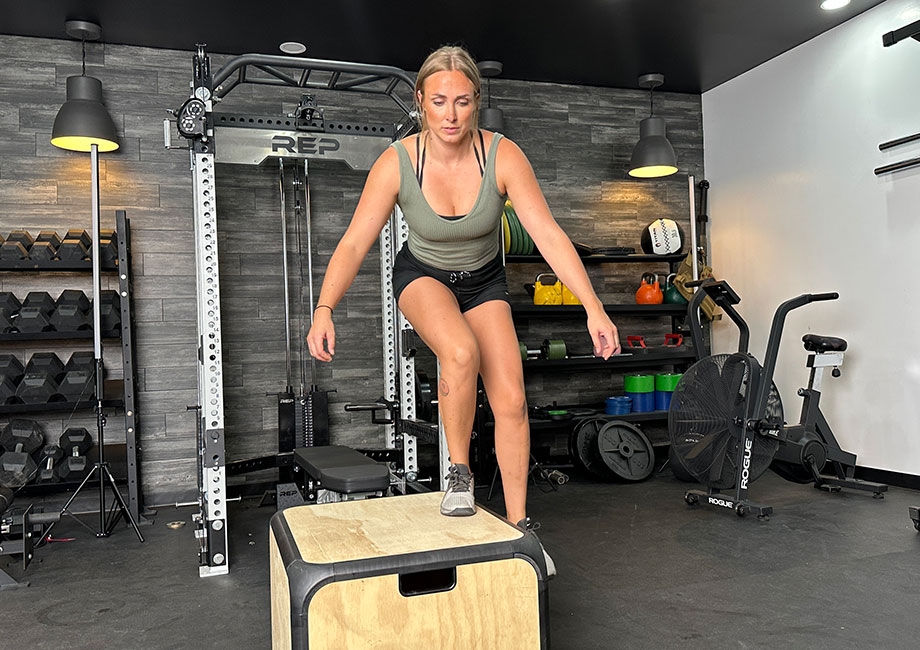We test and review fitness products based on an independent, multi-point methodology. If you use our links to purchase something, we may earn a commission. Read our disclosures.
Most people intrinsically understand the value of agility training for professional athletes, but what about everyday people? Are agility exercises important for ordinary people who just want to lead healthy lives?
We think so!
Agility training is very helpful, both in regards to keeping competitive in sports1 and for making the activities of daily living smoother, safer, and more manageable.
RELATED: What is Functional Fitness?
So, we’re discussing agility training with Amanda Capritto, CPT, CES, CNC, CF-L1, and GGR Senior Staff Writer. We’ll define what agility entails, why it’s important for everyone, and how to improve yours using a few agility exercises and drills.
Understanding Agility
Agility is about more than speed alone; it’s about quickness. It’s also about being able to accelerate quickly to your top speed, then decelerate or change directions on a dime if needed.
Running backs use agility to juke out of the linebacker’s path, dodge tackles, and hightail it to the end zone. Shooting guards use agility to shake coverage, break into the paint, and nail the layup. Goalkeepers use agility to react to the penalty kick, diving and snatching the ball out of the air before it touches the net.
That’s agility.
RELATED: Treadmill Speed Training
Who Should Do Agility Exercises?
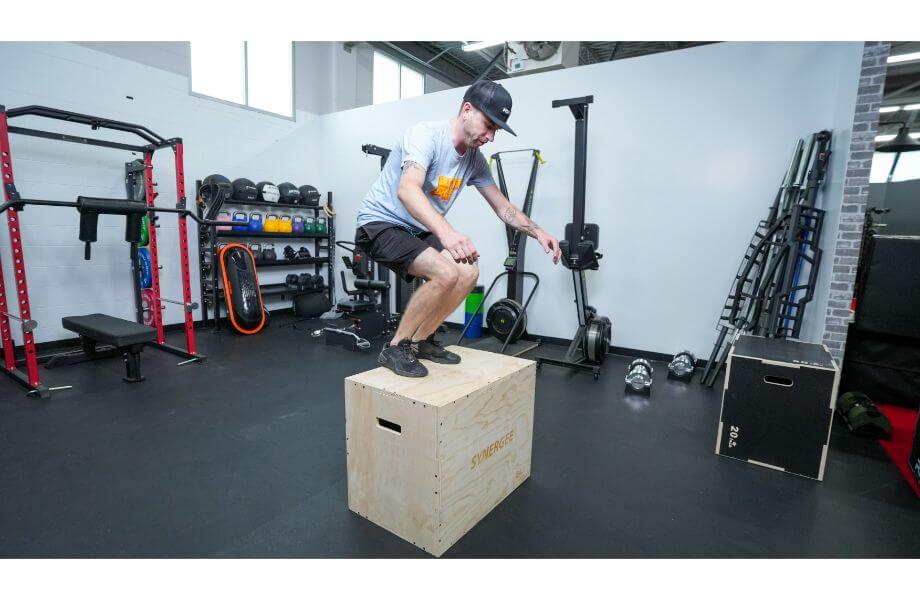
Most athletes rely on speed and agility, but everyone can enjoy the benefits of agility training.
Agility helps us more efficiently navigate crowded spaces, such as busy bus and train terminals, bustling bars and nightclubs, or even just the supermarket on a Saturday afternoon.
Quick reflexes and agility help you avert danger. It’s what helps you correct your mistake if you step into traffic without noticing the cyclist speeding towards you or dive-catch your child when they slip on a staircase, even though you told them how many times not to play on staircases.
Agility is also very useful on the dancefloor, so incorporating agility exercises into your workout routine is sure to translate to some fancy footwork at the next wedding you attend.
So, even if you don’t identify as an athlete, agility training is still worthwhile.
How to Train for Agility
There are a few key variables to consider when agility training.
Speed
Speed refers to how fast you’re able to move.
That could refer to, for example, the velocity at which you’re traveling when you’re running or sprinting, but it also could refer to the quickness at which you’re able to complete certain tasks, like passing or shooting a ball.
Reaction Time/Reflexes
Reaction time2 is defined as “a measure of the response to a stimulus.”
Common sports applications include swinging a baseball bat to hit the ball, or running to field the same ball after the batter knocks it into left field. It’s how fast you could change directions mid-run to react to an incoming defender or other obstacle.
RELATED: Best Sports Drinks
In everyday life, it’s how fast you’ll move to catch a dropped object or move to wipe up a drink that was spilled accidentally.
So, whether you’re a pro athlete or not, having great reflexes helps in many ways.
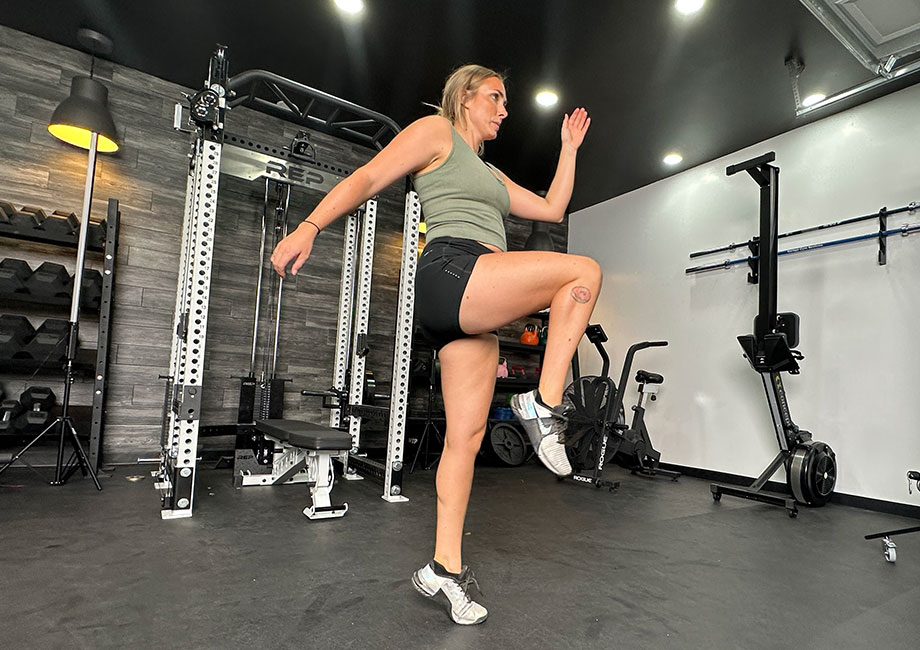
Lateral Movement
Lateral movement refers to the speed and precision you’re able to travel from side to side.
There are applications where moving laterally is helpful in everyday life, like if your neighbor’s dog gets loose and they ask you to grab its leash as it tries to sprint past you.
Most often, we see lateral movement in sports, such as during man-to-man coverage in basketball or when returning your opponent’s serve in tennis, pickleball, or ping pong.
RELATED: Conditioning Workouts
Backward Movement
Good agility enables us to travel backwards without slipping, tripping, or toppling over. Being able to move backwards is useful in various sports, including baseball, volleyball, and more.
Accuracy
Accuracy in agility refers to how precise your footsteps and movements are.
You don’t always need to execute within a razor-thin margin for sports that feature large playing fields, but accuracy is paramount in events like gymnastics, skiing, and parkour.
Best Agility Exercises Anyone Can Try
It doesn’t matter if you’re a fitness beginner or advanced athlete; these agility exercises can help anyone finetune their reflexes, enhance proprioception, and improve speed and conditioning.
Speed Ladder Drills
You’ll need an agility ladder, an inexpensive and portable piece of workout equipment, to perform the following agility drills.
Powermax 30
Powermax 30' Agility Ladder
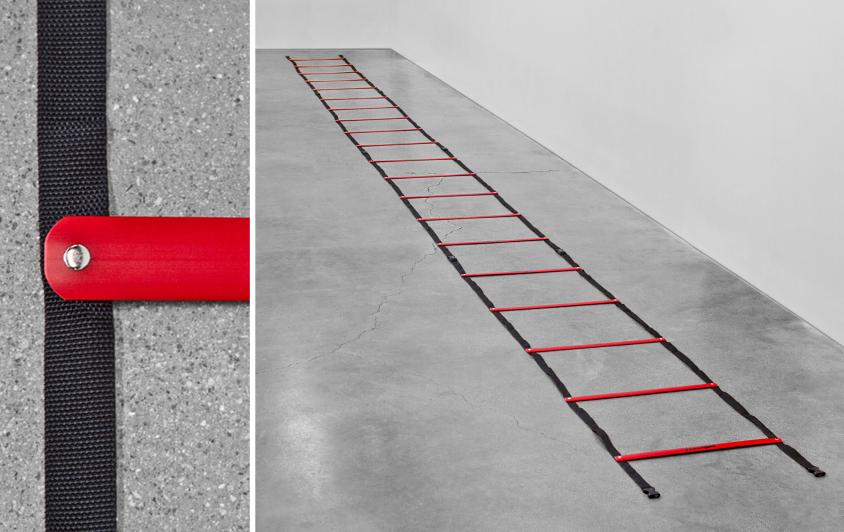
Product Highlights
THE ORIGINAL LADDER USED BY TOP ATHLETES AND TEAMS WORLDWIDE TO IMPROVE FOOTWORK.
Specifications:
- Length: 30′
- Four 7’6” sections make it easy to adapt to sport specific footwork drills
- Slats are not adjustable
- Easy to transport and store
- Comes with carry bag.
Pros & Cons
Bottom Line
Forward Running, High Knees
Your basic forward rush through the ladder is a great warm-up for agility ladder drills, but it also enhances coordination and foot speed.
Simply run through the ladder with high knees, making sure to touch down in each space. Alternate right foot and left foot as you move, and keep on the balls of your feet to stay nimble.
“This isn’t steady-state cardio,” says Amanda Capritto, CPT, CES, CNC, CF-L1. “Aim to get through the ladder as fast as possible, rest between sets, and give each round a full effort.”
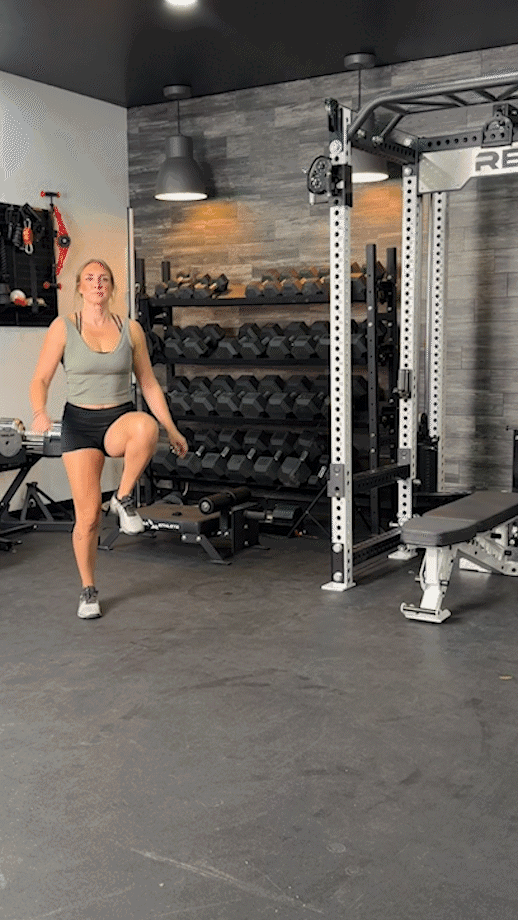
Lateral Shuffle
The side shuffle is perfect for court sports like basketball, tennis, and volleyball since the side to side movement mirrors what you’ll be doing while on defense or need to be ready to react.
It’s also helpful for improving knee and ankle stability, helping decrease your risk of injury.
Crouch down to lower your center of gravity, then step one foot at a time into the next space of the ladder. You’ll only have one foot in a space at a time, but each foot will “visit” each space before you’re through.
Go all the way down, leading with your right leg, then come back, leading with the left.
RELATED: Balance Exercises
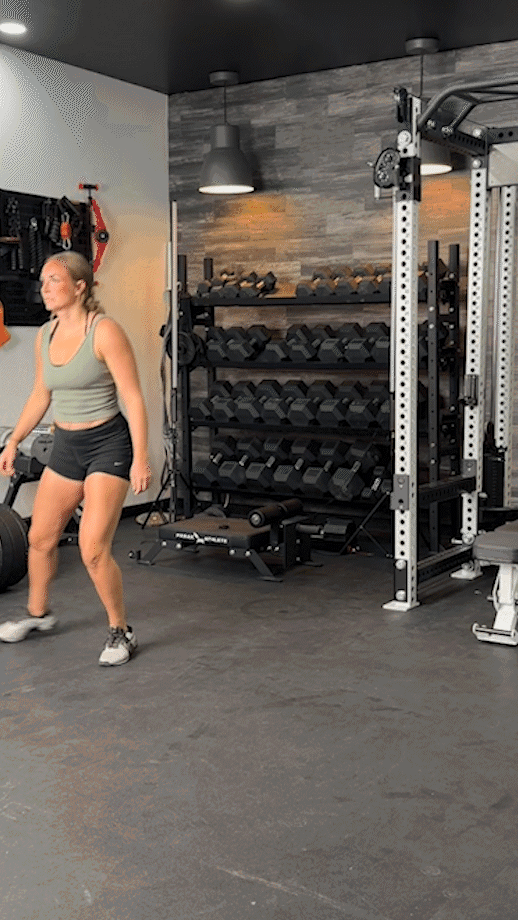
Lateral Shuffle, High Knees
This version of the lateral shuffle has you getting those knees high.
“Incorporating high knees during the lateral shuffle improves agility, coordination, and footwork,” says Amanda, “It also activates your core and elevates your heart rate, producing a cardio stimulus and enhancing your VO2 max.”
RELATED: What Does Cardio Do to Your Body?
Plus, studies show3 that side hops improve knee stability and overall function, which contributes to a reduced risk of injury.
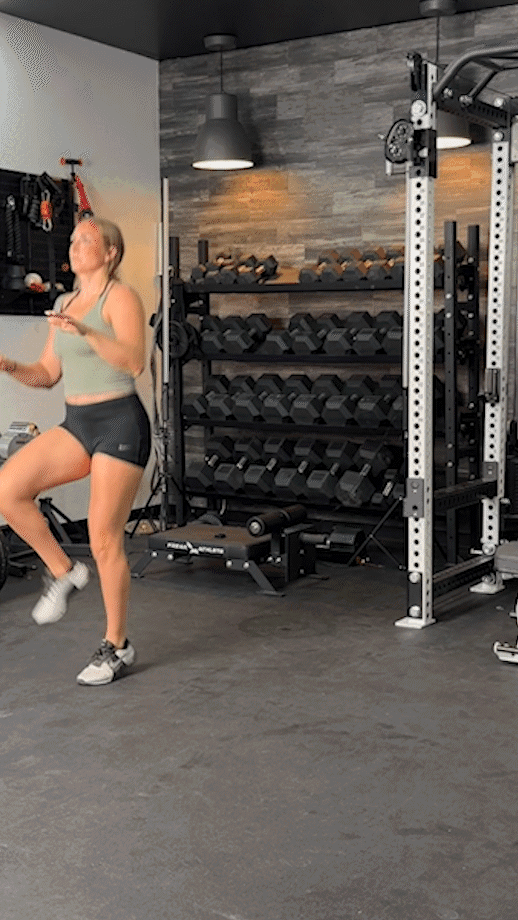
Backward Running, High Knees
Running backwards seems bizarre, but studies show it’s a beneficial practice that improves balance, posture, and proprioception4.
Start with your back to the ladder and backpedal, one foot at a time, backwards while keeping those knees as high as possible.
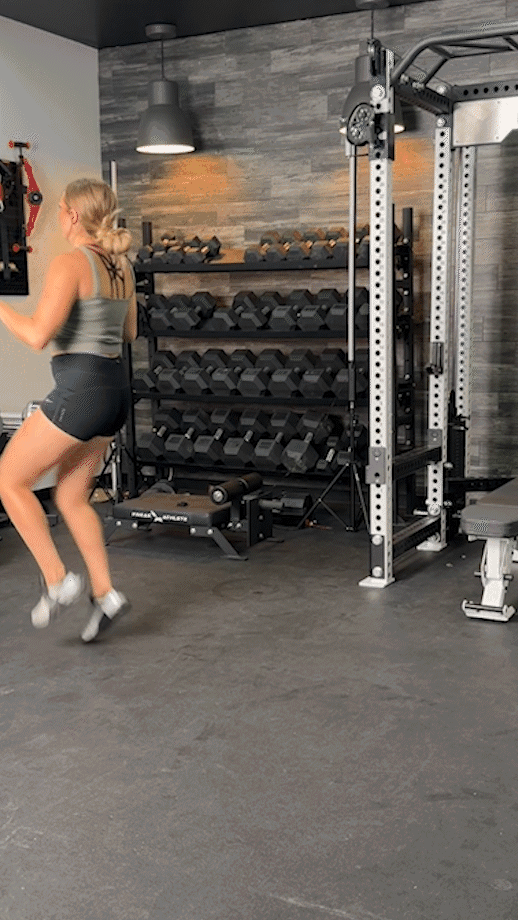
Plyo Box Drills
You’ll need a sturdy plyo box for the following agility exercises.
According to studies5—particularly centered around volleyball—“plyometric training seems to increase vertical jump performance, strength, horizontal jump performance, flexibility, and agility/speed,” making it useful for agility workouts.
RELATED: Best Plyo Boxes
Box Jumps
Place a plyo box on the floor in front of you, then explosively jump into the air. Aim to land on top of the box with both feet and your knees bent. Once you’re on top, stand up completely and bring your hips forward to full extension before counting the rep. Then, jump or step back down.
“I recommend stepping down after each repetition,” says Amanda Capritto, CPT, CES, CNC, CF-L1. “It’s more gentle on your joints, and helps you conserve energy during the set. You’ll need that energy to really explode off the floor and build explosive power, because that’s more important than the dismount.”
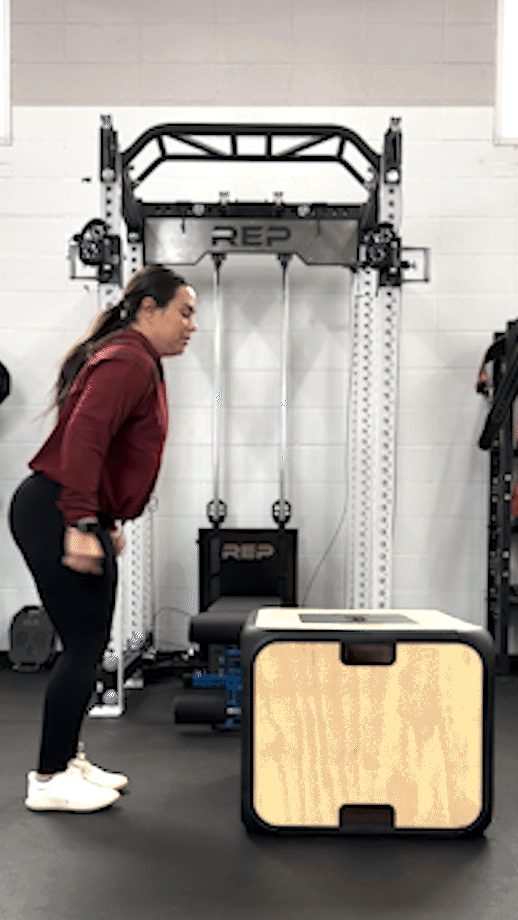
Box Jump-Overs
Goodness, do you really have to jump over the box for this one? Actually, no.
While completely clearing the plyo box is an impressive feat of athleticism, the standard box jump-over movement involves jumping on then off the box to the other side.
Unlike standard box jumps, which require fully extending your hips at the top of the movement, you can remain crouched on top of the box as you dismount, making it a much quicker movement by comparison with less risk dreaded shin-scrapes.
“A trick to cycle reps for this one is to turn 180 degrees during your dismount,” says Amanda. “That way, you’re already facing the box once you land instead of facing the opposite direction.”
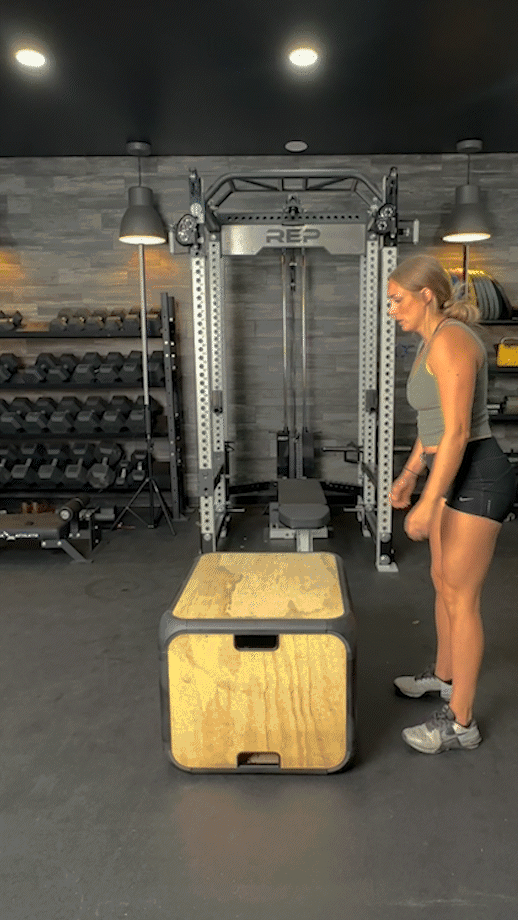
Lateral Step-Overs
Moving side to side, as you do during the lateral shuffle, is also beneficial practice during plyometric training drills, but there’s a greater risk of injury when jumping sideways. If you don’t totally clear the edge of the box, you could be in for a nasty fall.
To mitigate the risk, convert your box jump to a step-over by simply standing with the plyo box at your side, stepping up with your closest foot, following with your other foot, and stepping down on the other side. Then, step back over the other way so you wind up back at your starting position.
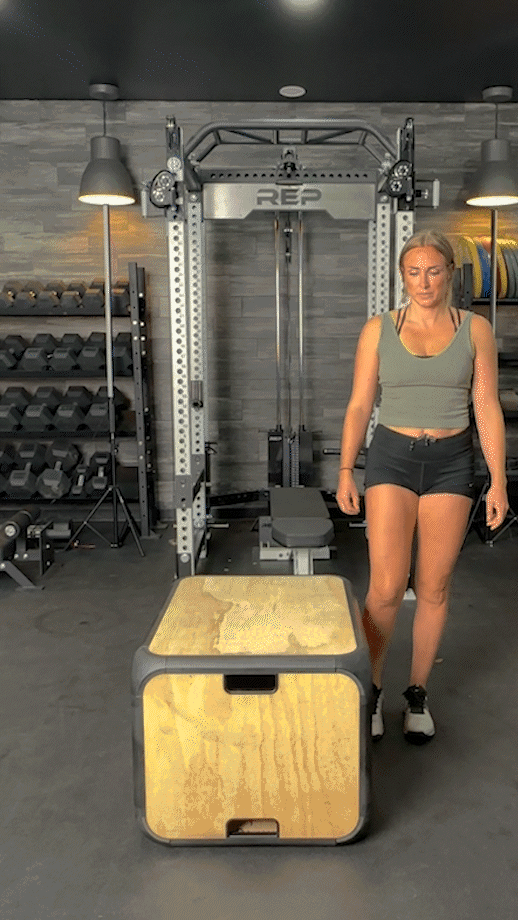
Jumping Drills
No box? No problem! These plyometric exercises require no equipment whatsoever!
Tuck Jumps
“Tuck jumps are a simple bodyweight movement that improves agility, increase explosive power, and target muscles like the quads, hip flexors, and core muscles,” says Amanda Capritto, CPT, CES, CNC, CF-L1. “They’re a great agility training exercise, but they’re a good warm-up for strength training programs, too.”
To perform the tuck jump, stand with your feet shoulder-width apart, bend your knees slightly, and launch yourself from the floor into the highest jump you can muster.
Tuck your knees into your chest in midair and, if possible, grab them with your arms briefly before coming down, landing gracefully, and cycling right into the next rep.
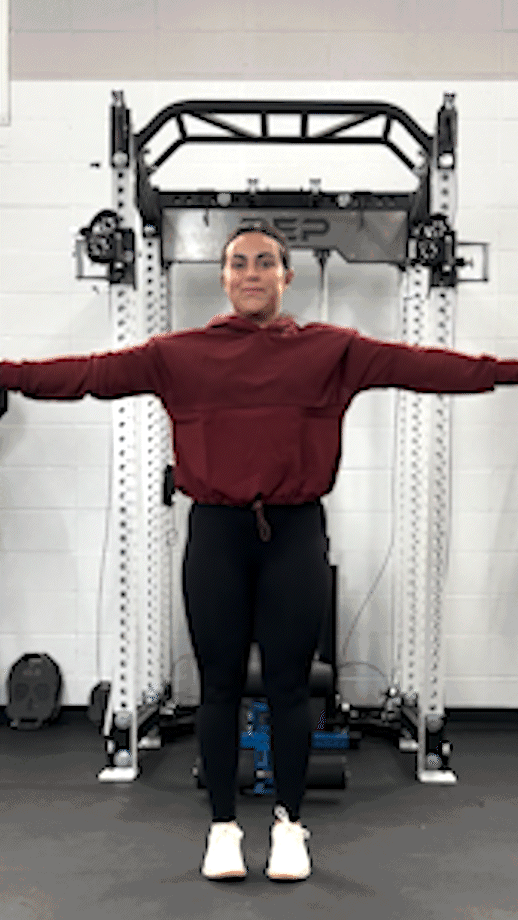
Broad Jumps
Training camps often use an athlete’s broad jump performance as an indicator of their overall athletic ability, but broad jumps can also improve power, coordination, and cardiovascular fitness.
They also build lower body muscles, including the glutes, quads, hamstrings, and calves, and studies show that muscle activation from plyometric jump training6 can contribute to hypertrophy.
To perform a broad jump, squat and jump as far forward as possible, landing in the squat position.
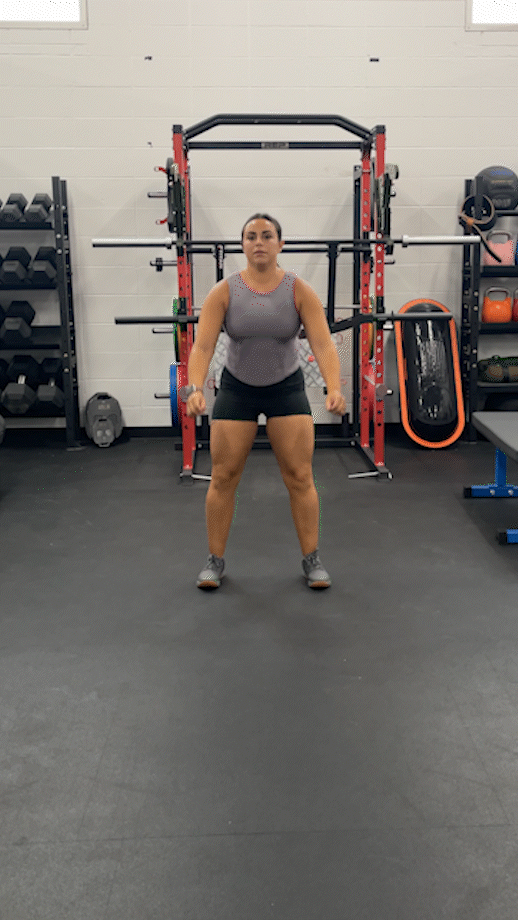
Running Drills
Jogging is excellent steady-state cardio, but running drills are high-intensity exercises that can provide the most benefits from agility training, like improved speed, power, reaction times, balance, and more.
RELATED: Steady-State Cardio Vs HIIT
Shuttle Runs
Shuttle runs vary depending on the preferences of the individual, athlete, coach, or personal trainer who’s programming them into the workout, but generally all shuttle runs involve running back and forth between two markers.
Variables that need to be set before starting include the distance between the markers, the desired total number of reps or drill time limit, and the general pacing.
Starting from a track stance, race to the first marker, keeping your center of gravity low, and touch the floor with both hands once you reach it. Turn back towards the starting position, then spring forward and race back to the first marker.
Lather, rinse, and repeat.
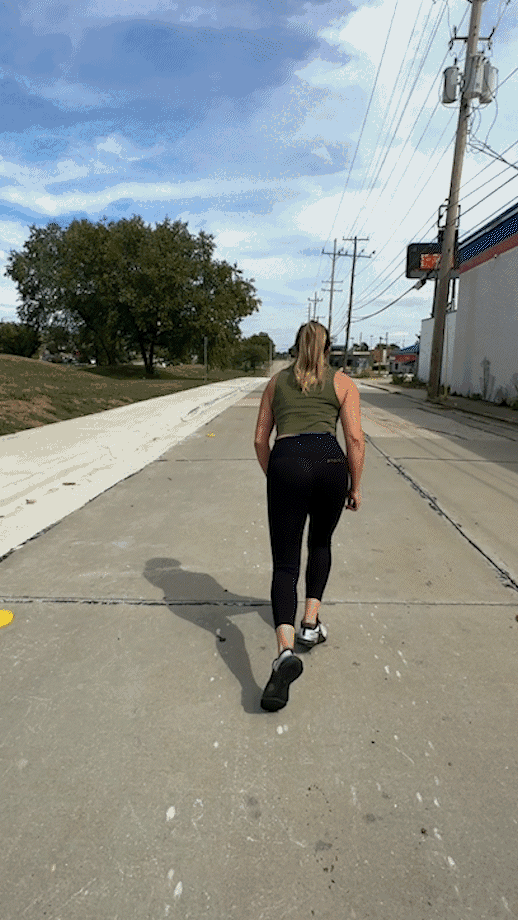
Linear Runs
As the name suggests, linear running drills involve sprinting in a straight line. This could be as simple as simply getting into a track stance and taking off after a three count, but there are ways to keep it interesting, including:
- Falling forward into a sprint to assist with initial acceleration
- Placing cones at increasingly further distances to mirror increasing stride length
- Starting from a lateral position
- Starting from a half-kneeling lateral position
- Starting from a prone position
And, of course, don’t forget about the dreaded hill sprint. Most runners loathe hill sprints, but studies show they significantly increase straight-line and maximal sprint speeds7, translating to enhanced sport performance.
RELATED: 9 Running Workouts For Every Runner
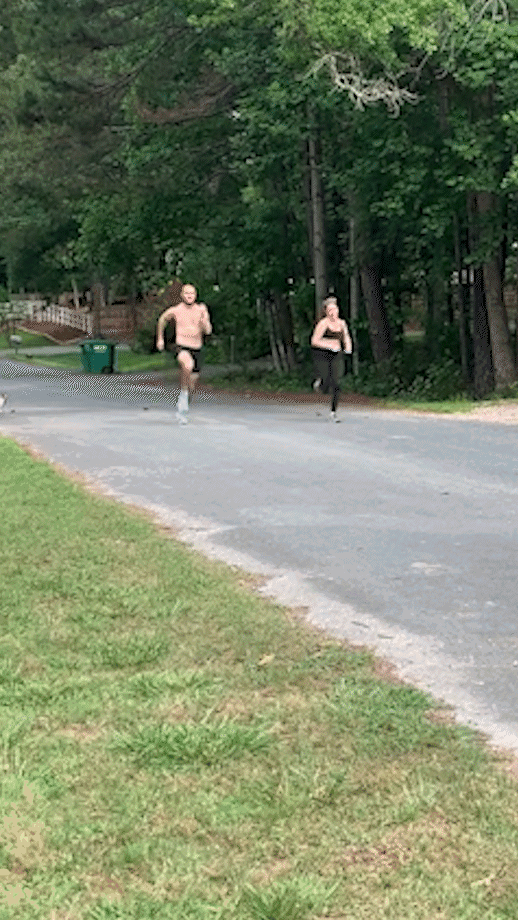
Cone Drill/L-Drill
“The cone drill can be a tricky one,” says Amanda Capritto, CPT, CES, CNC, CF-L1, “but it’s a lower-body builder that also improves your balance and ability to change directions on the fly.”
Here’s how to perform the cone drill:
- Set down three cones, approximately five yards apart, in an L shape.
- Choose your starting side, then sprint to the middle cone and touch it.
- Sprint back to the start and touch the cone.
- Now, sprint back towards the middle cone, this time passing along the inside of the L and heading towards the third cone.
- Run around the third cone, weaving back to the inside of the middle cone, and head all the way back to your starting position.
- Repeat the drill starting from the third cone this time.
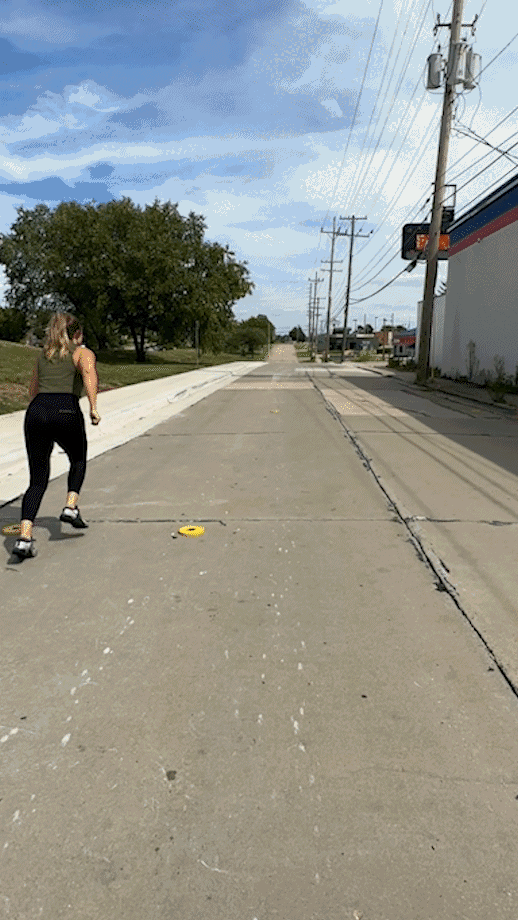
Agility Exercises: Final Thoughts
Athletes benefit significantly from agility training, as it improves their movement speeds, reaction time, and overall sports performance, but everyday people can benefit from agility exercises, too.
Working a few agility exercises into your workout routine can yield fitness benefits such as improved balance, coordination, proprioception, and posture. Agility also assists with mobility and stability, helping decrease your risk of training injury.
So, what do you have to lose? Try some of our agility exercises during your next session!
Agility Exercises: FAQs
What is agility in fitness?
Agility refers to an individual’s ability to move with speed and precision. It can be observed during sports performance as well as in everyday life.
What are the best agility exercises?
The best agility exercises tend to include agility ladder drills, plyometric exercises, jumping calisthenics, and running drills. Combining these activities should help improve your agility and sports performance.
How can I practice agility at home?
“The great thing about agility training is it often can be performed anywhere with minimal equipment,” says Amanda Capritto, CPT, CES, CNC, CF-L1, and GGR Senior Staff Writer. “A plyo box takes up a little space, but agility ladders fold up easily and cones stack, so you can perform [agility exercises] at home with no problem!”
References
1. Kovacikova Z, Zemková E. The Effect of Agility Training Performed in the Form of Competitive Exercising on Agility Performance. Res Q Exerc Sport. 2021;92(3):271-278. doi:10.1080/02701367.2020.1724862
2. Jain A, Bansal R, Kumar A, Singh KD. A comparative study of visual and auditory reaction times on the basis of gender and physical activity levels of medical first year students. Int J Appl Basic Med Res. 2015;5(2):124-127. doi:10.4103/2229-516X.157168
3. Markström JL, Grip H, Schelin L, Häger CK. Dynamic knee control and movement strategies in athletes and non-athletes in side hops: Implications for knee injury. Scand J Med Sci Sports. 2019;29(8):1181-1189. doi:10.1111/sms.13432
4. Ordway JD, Laubach LL, Vanderburgh PM, Jackson KJ. The Effects of Backwards Running Training on Forward Running Economy in Trained Males. J Strength Cond Res. 2016;30(3):763-767. doi:10.1519/JSC.0000000000001153
5. Silva AF, Clemente FM, Lima R, Nikolaidis PT, Rosemann T, Knechtle B. The Effect of Plyometric Training in Volleyball Players: A Systematic Review. Int J Environ Res Public Health. 2019;16(16):2960. Published 2019 Aug 17. doi:10.3390/ijerph16162960
6. Arntz F, Mkaouer B, Markov A, et al. Effect of Plyometric Jump Training on Skeletal Muscle Hypertrophy in Healthy Individuals: A Systematic Review With Multilevel Meta-Analysis. Front Physiol. 2022;13:888464. Published 2022 Jun 27. doi:10.3389/fphys.2022.888464
7. Jakeman JR, McMullan J, Babraj JA. Efficacy of a Four-Week Uphill Sprint Training Intervention in Field Hockey Players. J Strength Cond Res. 2016;30(10):2761-2766. doi:10.1519/JSC.0000000000001373
Further reading

Which squat variation is best? Learn about the benefits of the front squat vs back squat, some drawbacks to consider, and how to perform both movements safely. Read more

Looking to add an extra challenge to your workout? Our fitness experts and CPTs take a look at the best weighted vest for runners, CrossFitters, and more. Read more

The best gourmet meal delivery services can rival meals from your favorite restaurant, but with minimal prep time and cleanup. Read more

Interested in trying BCAA capsules? We tested and rated one popular option in our Pure Encapsulations BCAA review. Read more

